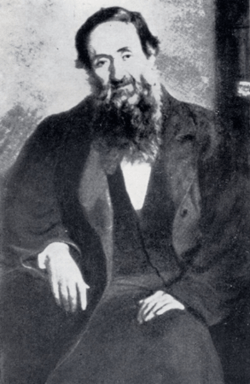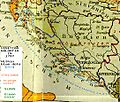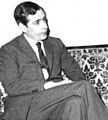Dalmatian Italians facts for kids
Dalmatian Italians are Italians whose families originally came from Dalmatia. This region is now part of countries like Croatia, Montenegro, and Bosnia and Herzegovina.
Contents
Italian People in Dalmatia
Dalmatian Italians are one of the oldest groups of people in Dalmatia. This area is now mostly in Croatia and Montenegro.
Their ancestors were people called Romanized Illyrians. They lived in Dalmatia since the Middle Ages. They lived in the Dalmatian City-states and on the islands nearby.
After the 1840s, the number of Dalmatian Italians slowly decreased. Now, there are only about 1,000 people left. Even though they are a small group, they had a very big impact on the region for many centuries.
Dalmatian Italians were very important in Dalmatia. This was especially true when Italians, Croats, and Serbs started to unite in the early 1800s. In 1816, a count by Austria-Hungary showed that 66,000 people spoke Italian in Dalmatia. This was about 22% of the total population of 301,000. However, by 2010, only a few hundred remained.
Today, Dalmatian Italians in Croatia and Montenegro are represented by the Italian National Community (Italian: Comunita Nazionale Italiana). In Croatia, the Italian Union (Unione Italiana) is the official political group for them. The number of Dalmatian Italians in Croatia has dropped to about 300. The Italian Union mainly focuses on the Istria region. This area includes the city of Fiume (now Rijeka), where most of Croatia's Italian minority lives. About 30,000 Italian citizens live there.
In Dalmatia, the main centers for the Italian National Community are in Zara (now Zadar), Spalato (Split), and Cattaro (Kotor) in Montenegro.
History of Dalmatian Italians
Dalmatian Italians played an active role in the unification of Italy. This period was called the "Risorgimento."
In 1848, there was a lot of change in Austria. Cities like Milan, Venice, and Vienna rose up. The Venetian Republic was formed again. Nicolò Tommaseo from Sebenico and Leone Graziani from Spalato were important leaders. They supported the new republic with Daniele Manin and Giovanni Battista Cavedalis. Many Dalmatians went to Venice to help. People from Dalmatia took on important roles in the new government and military. For example, Antonio Paulucci delle Roncole from Zara became the Navy Minister. A group called the "Dalmatian-Istrian Legion" was also created. Seven members of this group died.
Many Dalmatian Italians wanted their cities, like Spalato (Split), to join the Kingdom of Italy. This happened after World War I. The Incidents in Spalato were a well-known event during this time.
Some Dalmatian Italians, especially those living in Zara (now Zadar), joined the Italian government after World War I. They supported Italy taking control of coastal Dalmatia in 1941. After World War II, almost all of the 25,000 remaining Dalmatian Italians were forced to leave Dalmatia. This event is known as the Istrian-Dalmatian exodus.
Today, one of the main challenges for those who left is that they cannot easily buy homes in Croatia if they do not live there. They also seek payment for the properties they lost in Dalmatia when they were forced to leave.
Groups and Publications
Many Dalmatian Italians are part of different groups, such as:
- Associazione nazionale Venezia Giulia e Dalmazia (National Association of Venezia Giulia and Dalmatia)
- Comunità di Lussinpiccolo (Community of Mali Lošinj)
- Comunità chersina nel mondo (Community of Cres in the World)
- Libero Comune di Zara in esilio (Free Commune of Zadar in exile)
- Società Dalmata di Storia Patria (Dalmatian Society of Homeland History)
The most popular publication for Dalmatian Italians is Il Dalmata. It is published in Trieste by Renzo de' Vidovich.
Related pages
- Istrian-Dalmatian exodus
- Italian language in Croatia
- Italian cultural and historic presence in Dalmatia
- Dalmatian City-states
- List of Italian place names in Dalmatia
- Venice and Dalmatia
- Italian irredentism in Istria
- Italian irredentism in Dalmatia
- Incidents in Spalato
- Spalato (Italian province)
- Cattaro (Italian province)
- Zara (Italian province)
Images for kids
-
Dalmatian possessions of the Venetian Republic and the Republic of Ragusa in 1560.
-
Austrian linguistic map from 1896. In green the areas where Slavs were the majority of the population, in orange the areas where Istrian Italians and Dalmatian Italians were the majority of the population. The boundaries of Venetian Dalmatia in 1797 are delimited with blue dots.
See also
 In Spanish: Dálmatas italianos para niños
In Spanish: Dálmatas italianos para niños


















